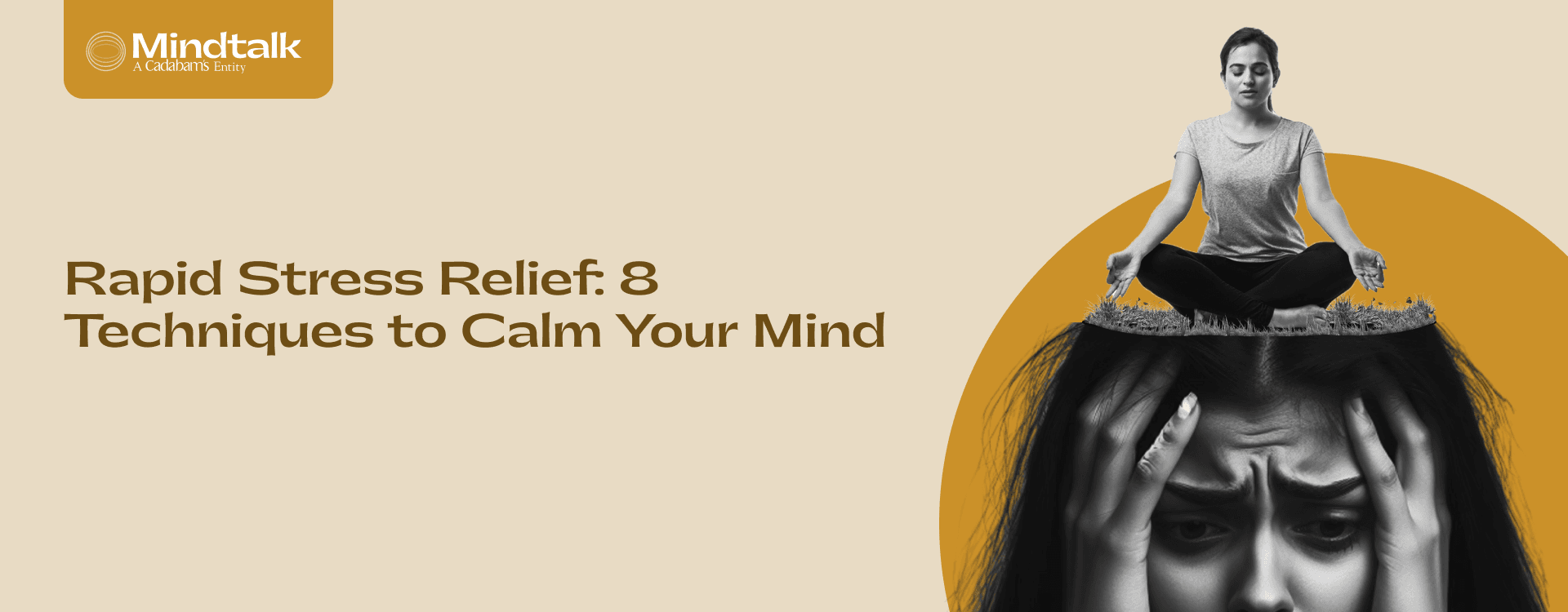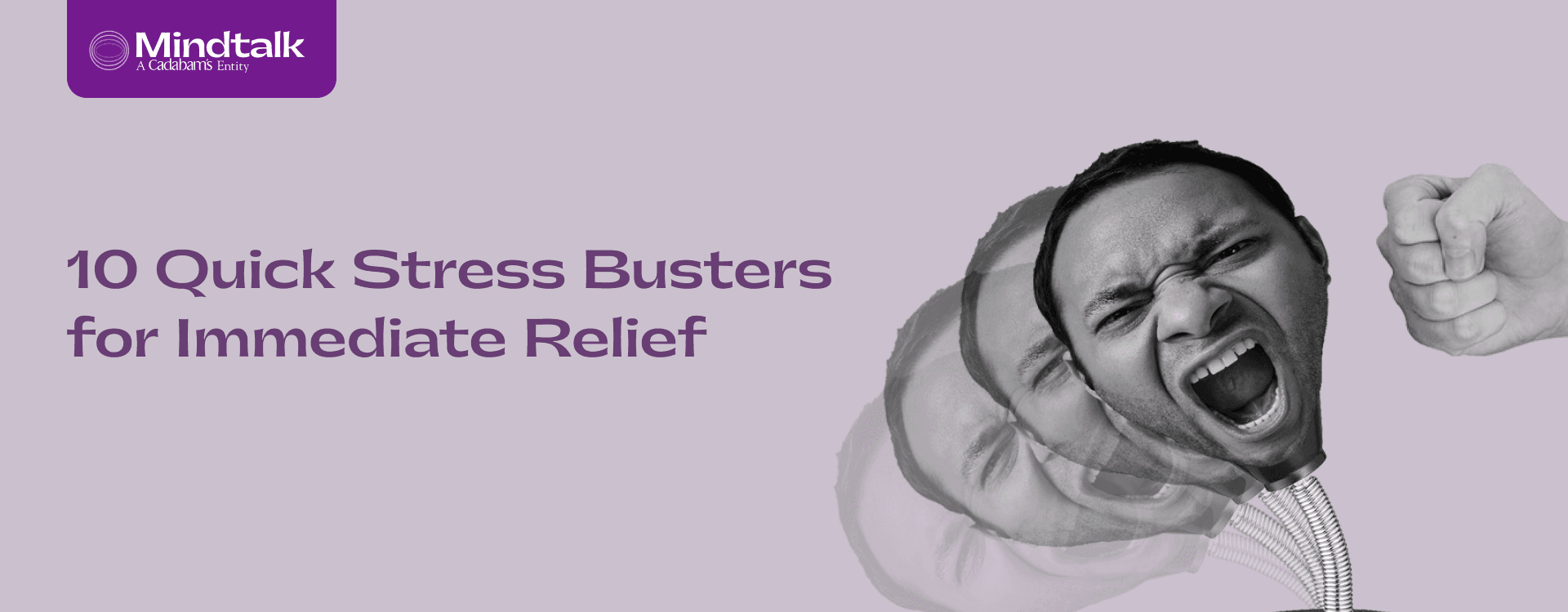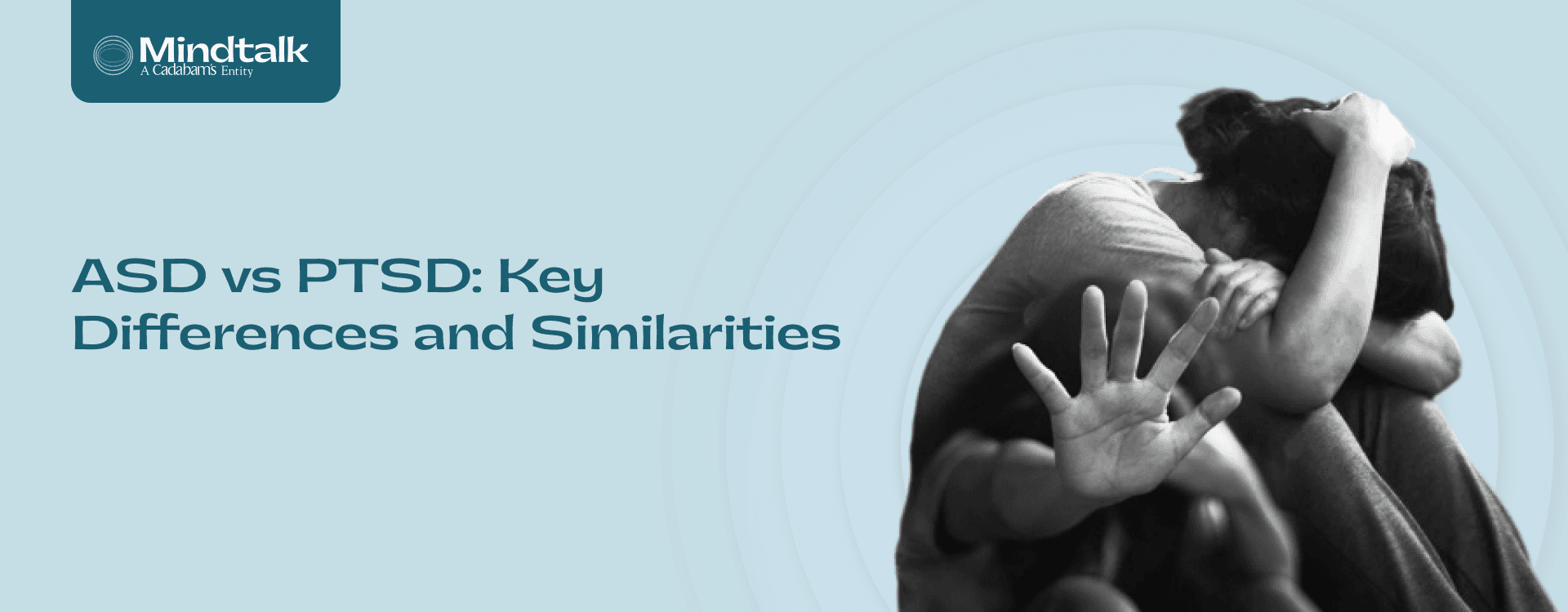Distinguishing ASD From PTSD

Acute Stress Disorder (ASD) and Post-traumatic Stress Disorder (PTSD) are two mental health conditions that arise due to the exposure to a traumatic event. The two can be confused for each other easily and so let’s look into their key differences, similarities and symptoms to better understand the two disorders.
Outline Of ASD And PTSD
Acute Stress Disorder (ASD) and Post-Traumatic Stress Disorder (PTSD) are mental health conditions that arise from exposure to traumatic events. While sharing similar symptoms, they differ in onset, duration, and treatment approaches.
What Is Acute Stress Disorder (ASD)?
Acute Stress Disorder (ASD) is a short-term mental health condition that can develop within 3 days to 1 month after exposure to a traumatic event. ASD is characterized by intense and distressing symptoms that significantly interfere with a person's ability to function. Symptoms include re-experiencing the traumatic event through flashbacks or nightmares, avoiding reminders of the trauma, and experiencing negative alterations in mood and cognition. ASD typically resolves within one month, but some individuals may develop Post-Traumatic Stress Disorder (PTSD).
Causes Of ASD
ASD is caused by exposure to a traumatic event, such as a natural disaster, physical assault, or car accident. The severity of the trauma and an individual's vulnerability to stress can influence the development of ASD.
Post-Traumatic Stress Disorder (PTSD)
Post-Traumatic Stress Disorder (PTSD) is a chronic mental health condition that can develop months or even years after exposure to a traumatic event. PTSD is characterized by persistent symptoms that significantly interfere with a person's daily life. Symptoms include re-experiencing the traumatic event, avoidance of reminders of the trauma, negative alterations in mood and cognition, and increased arousal. PTSD can have a devastating impact on a person's life, affecting their relationships, work, and overall well-being.
Causes Of PTSD
PTSD is caused by exposure to a traumatic event, such as combat, physical assault, or a natural disaster. The severity of the trauma, an individual's vulnerability to stress, and a lack of social support can increase the risk of developing PTSD.
Contrasting ASD And PTSD: Fundamental Distinctions
While both ASD and PTSD arise from traumatic experiences, they differ in their timing, duration, and symptomatic presentation, necessitating distinct diagnostic criteria.
Timing And Onset Of Symptoms
ASD emerges immediately after the traumatic event, typically within 3 days to 1 month. Whereas PTSD may develop within 3 months but can also manifest months or even years later.
Duration And Persistence Of Symptoms
ASD is a short term condition that typically lasts from 3 days to a month with symptoms that subside within 4 weeks. PTSD on the other hand is a chronic condition that can persist for months, years or even an entire lifetime.
Clinical Symptoms And Diagnosis Criteria
ASD symptoms include:
- Emphasized re-experiencing
- Avoidance
- Negative mood changes
- Symptoms of Hyperarousal
- Detachment
- Loss of Interest
- Persistent negative thoughts
In summary, ASD is an acute reaction to trauma, while PTSD is a chronic condition with delayed onset and persistent symptoms. The clinical presentation and diagnostic criteria reflect these fundamental distinctions.
Common Ground: Similarities Between ASD And PTSD
Despite distinct characteristics, ASD and PTSD share several crucial aspects that highlight the impact of trauma on mental health.
Traumatic Events As A Trigger
Both conditions are triggered by exposure to severely distressing events, including natural disasters, accidents, physical assault, witnessing violence, or other overwhelming experiences.
Shared Psychological Symptoms
ASD and PTSD share several core psychological symptoms, including:
- Re-experiencing the traumatic event through flashbacks, nightmares, or intrusive thoughts.
- Avoidance of reminders of the trauma, such as people, places, or activities.
- Negative alterations in mood and cognition, including depression, hopelessness, anxiety, and difficulty concentrating.
- Increased arousal and hypervigilance, leading to sleep disturbances, irritability, and easily startled responses.
Approaches To Treating ASD And PTSD
Effective interventions for ASD and PTSD address the emotional and psychological impact of trauma, with a focus on symptom management and recovery.
Psychological Therapies And Interventions
The psychological therapies and interventions for treating both ASD and PTSD include:
- Cognitive-behavioral therapy (CBT): Restructures negative thoughts and behaviors related to the trauma.
- Exposure therapy: Gradually exposes individuals to reminders of the trauma in a safe and controlled environment.
- Eye movement desensitization and reprocessing (EMDR): Uses rhythmic eye movements to help process traumatic memories.
- Supportive therapy: Provides emotional support and guidance to manage distress and cope with trauma.
Pharmacological Treatments
Along with therapeutic modalities, medication will also be a part of the recovery process and can include:
- Antidepressants: Help alleviate symptoms of depression, anxiety, and insomnia.
- Anti-anxiety medications: Manage symptoms of anxiety, panic attacks, and hyperarousal.
- Sleep aids: Improve sleep quality and address sleep disturbances.
Lifestyle Adjustments and Coping Mechanisms
Your recovery program will also entail lifestyle adjustments that will help you cope with the illness better. These adjustments will include:
Regular exercise and physical activity: Reduce stress and anxiety, improve mood, and promote sleep.
Healthy sleep hygiene: Develop healthy sleep habits for better sleep quality and daytime functioning.
Mindfulness and relaxation techniques: Manage stress, anxiety, and negative emotions.
Social support: Build and maintain strong relationships for emotional support and understanding.
Coping Mechanisms And Support Systems
Navigating the challenges of ASD and PTSD requires a combination of personal coping strategies and supportive networks.
Building Resilience In ASD And PTSD
Resilience is an important trait to have when dealing with ASD and PTSD and a good way to develop that is through developing healthy coping mechanisms, building self-awareness and even learning stress management skills. Understanding your personal triggers and prioritizing your holistic health is crucial.
The Crucial Role Of Social Support
Dealing with something as serious as ASD and PTSD will warrant support from friends, families or even people who have had experience with the same. Which is why it’s important to have an open communication with the people around you as it will both provide emotional release and guidance.
The Importance Of Professional Support
Along with the support of your loved ones, it is important to seek professional help as well as they can help manage medications, help you develop coping skills and also monitor your progress.
Learn How Do ASD And PTSD Differ With Mindtalk
Understanding the nuances between ASD and PTSD is crucial for seeking the right treatment and managing symptoms effectively. With the help of our professionals at Mindtalk the process of understanding is made a lot easier. If you or a loved one is in need of help, please do reach out to us and book an appointment ASAP!
Similar Posts












